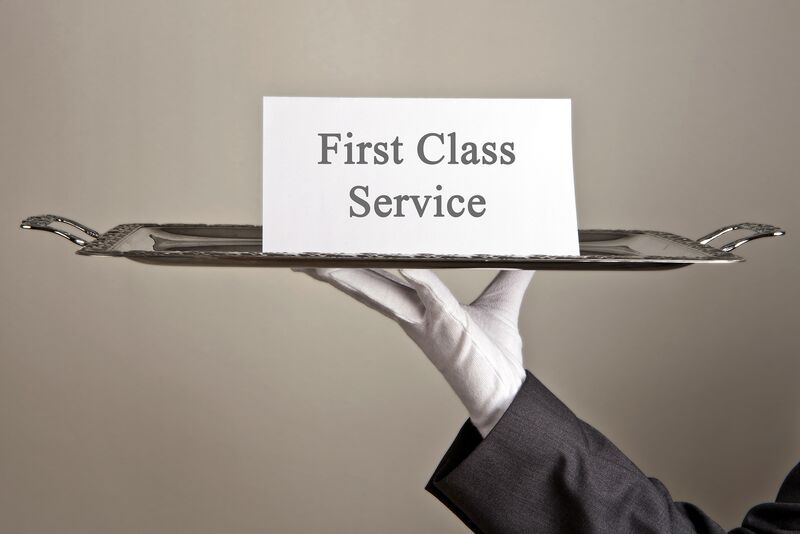Recently I read this intriguing article from the NY Times about the way that high end restaurants in the city use non-verbal communication between staff. These clues were displayed in a photo essay by Alfred Eisenstaedt in 1944 but are still used in restaurants today.
Such as Clear Crumbs from the Table – signaled by brushing one’s own shoulder or Table Not Ready – communicated by a host gripping hands at the waist to signal the maître d’ that the table is not ready and guests should be shown into the bar.
These simple yet effective systems of non-verbal communication say a lot about the business and staff.
1. The guest experience is top priority – first and foremost these non verbal tricks are used to give a superior dining experience. There are no signs for ‘hurry up and get these people out of here’ or ‘stop refilling the wine, this guy keeps spilling on the nice table cloth’. Each and every signal is designed to enhance the ambiance, cleanliness and total experience without alerting the guest.
Which leads me to…
2. The communication is subtle yet effective. What appears to be simple mannerisms like holding your hand across your jacket or grasping your hands at the waist is actually a message and one that most guests will not observe. Some of these requests are in other restaurants as well, but in the busy diner, for example, they’re communicated by Sally shouting at Don to clear table 15 and while you’re at it get table 6 some ketchup!
Even if the restaurant substituted these non verbal clues for whispered instructions it would be less effective. The guest would most often notice something was wrong or at least not going as planned.
3. Guests feel special. Their needs are anticipated and met before they’re even realized. Only one staff member ever stays at your table to explain the dishes set on the table and those crumbs are swept away before the guest can notice. As a result the guest feels pampered and cared for by each staff member they interact with.
Yesterday actually, I had an interesting conversation with the owner of the gym I attend and we discussed the lack of professionalism in my earlier attempted session with a trainer. I’ll have to give a more detailed account later, but one of the suggestions I gave was for the staff to adopt this same model of cooperation and forethought to give an amazing guest experience.
In the restaurant if you see the host standing with his hands clasped firmly together, fingers intertwined, arms and hands held closely at the waist, it means the table is not ready and the guests are shown to the bar instead of waiting in the lobby, staring at the walls and wondering if the restaurant down the street is busy tonight. Their guest experience has already begun as they’re shown into the bar, made comfortable and started with drinks to begin their evening.
Similarly, if the gym I use had a signaling system the trainer could easily signal the desk staff that the existing trainee was going to take 5 more minutes to wrap up. The desk clerk could then approach me (waiting somewhat impatiently outside the day care area) and apologize for the delay, take my intake form and provide me with a towel, leading me to begin my workout with 10 minutes on the treadmill for a workout. Then show the trainer where I was working and hand her the form to continue my guest experience.
But this level of professionalism requires another skill the restaurants have perfected:
4. Staff is both intentional and aware of their duties and the restaurant at all times. Due to the subtle nature of the hand signals, the staff must pay close attention to their body language, eye contact and non verbal clues. Otherwise, the simple brushing of lint off one’s shoulder could bring someone over to clear crumbs when none exist on the table.
It’s not just the signaling party that has to be aware but the receiver as well. The bus staff sure isn’t hanging out in the break room smoking and laughing about yesterday’s episode of Jersey Shore. They’re professionals who have keen eyes on the room and their team to receive the clues that they are needed to clear plates from a table or clean a spill.
And, this is important, the professionalism reaches to each level of the staff because everyone is committed to an excellent guest experience. The person who clears the table is no less important than the chef. Each one has their role and each person’s attention and skills are needed within the business.
Fascinating study, is it not?
Now, let’s talk about YOUR business. While virtual teams may have less success with utilizing non-verbal communication, they often lack even the basic verbal and written communication that’s needed to provide an excellent client experience.
Before the restaurant industry adopted the non verbal clues, there had to be systems in place. Let’s use a conference style coaching session as an example.
Your written system may include that the project manager for your business be on the phone 5 minutes before the call to test the line. At 4 and 2 minutes til start time the PM will announce the call and give reminders for listeners. At the start of the call the PM starts the recording and monitors incoming questions.
Each of these things can be done automatically when the system is communicated and then followed. The host will never have to say “uh, did we start the recording?” on the call or multitask to check herself. The host will also not have to wonder if the participants know to press *4 to ask a question and that questions should be succinct as we want to have time for every person to contribute to the call.
These are examples of the traffic rules described in the restaurant, such as the staff always walking clockwise and enabling a team member leading a guest to go before a team member holding a cold plate of food.
As a business owner you may not be standing near a table with your hand on your lapel but you must create a system and communicate it with your team. This will ensure that each routine task is completed as you have requested and when there are “crumbs on the table” your team acts efficiently to step in, resolve the problem and all without your instruction every step of the way.

 Systems are the Answer to your Struggles
Systems are the Answer to your Struggles Never Train Your Employees Again
Never Train Your Employees Again Do you like money?
Do you like money?